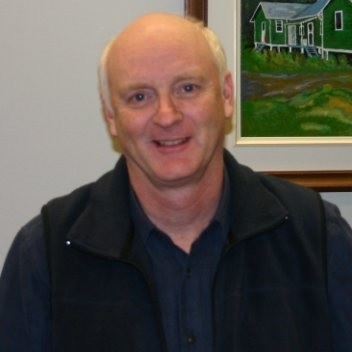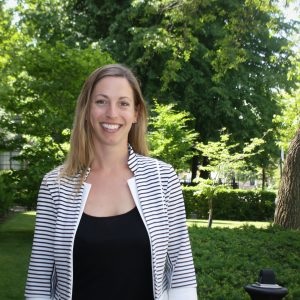
Education-industry partnership promotes upskilling in the building sciences
With support from eCampusOntario, a team of educators and industry professionals designed a series of open learning modules that educate learners and industry professionals about building science, a subject that’s increasingly in demand.

Image 1: Course material is digital and features interactive elements.
A need for new skills
Economic, structural and environmental factors all shape how modern buildings are designed and constructed. Those who are tasked with creating resilient but also energy efficient buildings require a unique set of knowledge and skills, spanning from architectural design to environmental conservationism.
An increasingly complex field, building sciences education needs to keep pace with growing industry demands. Ontario post-secondary programs must provide up-to-date and cross-sectoral learning content and resources for students.
Here’s how one education team, led by Kim Pressnail and Marianne Touchie from the University of Toronto’s Civil and Mineral Engineering program, addresses this need.
Pressnail: “We saw the need for this content because the building science fundamentals course builds foundations for all that is to follow. Some students come from other universities and haven’t taken a fundamentals course, so this is a way for them to catch up with our students who come through and have had our building science fundamentals course. The second benefit is that the content can be used in a complementary way as students engage with the materials as a supplement to the lectures. We believe this leads to better understanding of the in-class instruction.”
To respond to industry need and attract students to the field, Pressnail and Touchie re-designed the building science fundamentals course in a way that builds a foundational education base of cross-disciplinary knowledge and skills.
Open education + digital access = more opportunity for learners
Pressnail and Touchie knew they wanted the course content to be available for reuse by other schools, professional organizations, and practitioners in the field. Touchie explains how the process of designing the course content reflected their goal to make the learning material easy to access and navigate for audiences with different abilities and learning needs.
Touchie: “Development of the materials was very much an iterative process. What we were really trying to do was break down the fundamentals of building science because we recognize that with online learning you need chunks of five or ten minutes and because there are various needs. Students can be undergrad, graduate or from industry. Portioning out [the content] was actually pretty challenging, but we wanted to make sure that people didn’t have to engage with the material linearly, they could dive in where they needed to.
We wanted every instructor who’s going to use this material to be able to do so as flexibly as possible, to pick and choose what elements complement their course. Because not everyone is going to be delivering a fundamental course on building science – they might want to cherry pick those elements. There was very conscious decision-making in the organization and development of the materials.”
Thanks to careful planning, the online materials developed by Pressnail and Touchie’s team provide helpful information for not only current students or educators in architecture and engineering streams but also architectural, design and engineering firms who want to train their own employees. The modules are openly accessible under a creative commons licence, which means that while they are hosted by the University of Toronto’s Education and Technology office they are free for use and re-use.

Figure 2: the course modules are available online through a digital object repository.
Embracing cross-sectoral collaboration
The design team harnessed each team member’s extensive knowledge and hands-on experience in the field of building science. The team also collaborated with educators and subject matter experts from Ryerson University, Carleton University, George Brown College and Algonquin College. Industry partners from Engineering Link, RDH Building Science Inc. and engineering firm, Morrison Hershfield, also played a role in development.
Together, the partners established learning objectives, developed case studies, reviewed module content and set up a Steering Committee to suggest material updates based on student and educator feedback.

Figure 3: The modules include interactive video content and real world-examples.
Giving Ontario the opportunity to lead
With eCampusOntario’s support, Pressnail and Touchie’s initiative combines open education with program development that promotes workforce development in an area of industry need. It also has the potential to improve the future of the planet.
Pressnail: “Building science is rooted in building better buildings, for the people of today and tomorrow, because these buildings are going to be here for 40, 50, 60 or 100 years. If we anticipate the needs of people in the future, then we do a better job, because ultimately, it’s all about energy use, health, comfort and treading more lightly on our planet.”
Touchie: “Health sustainability, environmental sustainability, and economic sustainability. Those are really the three pillars that are supported when we build better.”
Bios:

Kim Pressnail, Associate Professor in the Department of Civil and Mineral Engineering at the University of Toronto

Marianne Touchie, Assistant Professor in the Department of Civil and Mineral Engineering at the University of Toronto
Do you have an eCampusOntario-supported project you would like featured? Contact us today.
Banner photo by Lex Photography from Pexels



